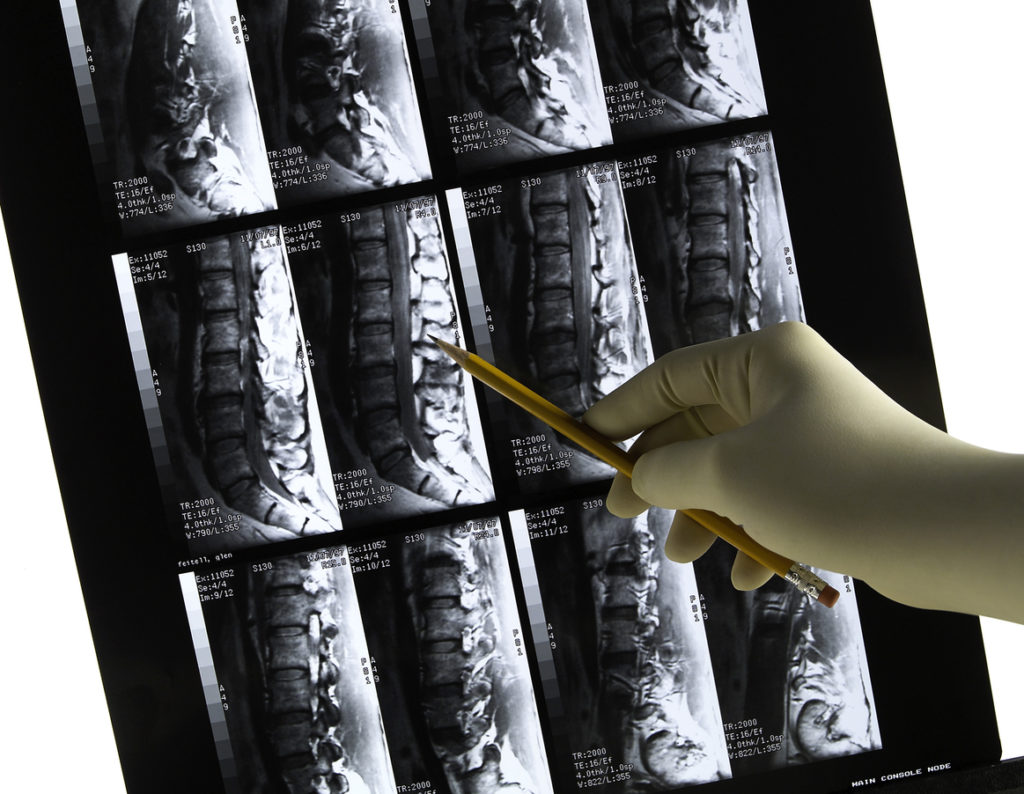7 Ways to Reduce Pain When Sleeping With Sciatica

Sleeping with sciatica is no easy feat. There may be lower back pain, numbness, hip pain, tingling, or even throbbing. Sciatica does not rest while you are asleep. However, there are some ways to reduce pain while sleeping.
Sciatica is a word to describe pain that moves along the sciatic nerve, which can become pinched or irritated. If you have sciatica, then you know the pain occurs in many locations, from your back to your buttocks to your legs and feet.
Not only can it cause pain, it can cause weakness, numbness and tingling. Any of these symptoms make it hard to be comfortable, especially when sleeping.
Statistics show that one in three adults say back pain impacts their daily activities, including sleep. This can happen for specific reasons.
Why Is Sciatica Pain Worse at Night?
The nerves involved in causing your sciatica pain are pinched, inflamed or irritated in some way, even when you are trying to sleep.
Lying down puts pressure on your lower back and can compress the sciatic nerve. This can cause pain from dull to excruciating. Your mattress can also contribute to nighttime discomfort.
Because you need rest to heal, sleeping with sciatica is extremely important. Below are tips to help you learn how to sleep properly; even with sciatica.
1. Apply Heat
Heat therapy has been shown to relieve symptoms of lower back pain, such as sciatica. However, many people are not familiar with the proper method for applying heat.
First, make sure the heat you apply is a warm temperature, not hot. If it is too hot, it can cause further irritation. In addition, where you apply the warm pack is important.
You may be feeling pain in your legs or feet, but the origin of the pain is in your lower back. Therefore, apply the warm pack to your lower back where the sciatic nerve is.
Finally, apply heat after you have tried cold packs for a few days. Cold packs decrease inflammation, which can take pressure off the nerve.
2. Hot Bath
Another way to apply heat to the lower back is by taking a warm bath, which can be relaxing to your whole body.
When you are relaxed, endorphins can be released. These are the pain-fighting chemicals in your brain and gut. You can also use essential oils to aid in relaxation.
3. Change Your Mattress and Pillow
When sleeping with sciatica, it may take you a while to find a position in which you feel comfortable enough to rest. Your first thought is that the trouble you are having is related to your sciatica. And you are correct. However, your mattress and pillow are also contributors.
Someone suffering from sciatica should have an orthopedic mattress and pillow. Too many people place mattress and pillow quality at the bottom of their priority list.
But sleep is one of the most important ways to improve sciatica and that can only happen with the right mattress and pillow.
Work with the staff of a mattress store to find the right mattress for the way you sleep.
- If you sleep on your stomach, you will want a firm mattress that aligns your body.
- If you sleep on your side, you will want a softer mattress that provides support in critical areas such as your hips.
- If you sleep on your back, you will benefit from a mattress that gives you support throughout your whole body.
Many with sciatica have found that body pillows make sleeping with sciatica much easier. In addition, placing a pillow between your knees to keep your body aligned has been found to be very beneficial.
4. Stretch
As you lay down to sleep, there are simple stretches you can do to relieve pressure on the lower back and minimize your symptoms.
Lying on your back, raise your knees to your chest to stretch the lower back.
You may even want to consult with a fitness expert to set up a nighttime stretching routine that helps with your sciatica.
5. Medicines
When sleeping with sciatica, it is okay to occasionally take medicine that helps you find rest. There are over-the-counter medications that are not addictive, such as acetaminophen, that can decrease inflammation in your lower back.
You may also want to work with a pain management specialist to discover other medicines, like muscle relaxants.
Your doctor may suggest other treatments like steroidal injections, physical therapy and infusion techniques in addition to medicine. Massage is another common recommendation from pain management specialists.
6. Massages
While deep tissue massages, given by a trained therapist, is a good idea, it may not be something you can do often. The good news is that there are massage techniques you can do at home, before bed, to help you sleep.
Using your knuckles, you can massage your lower back area. You can also use techniques using both your knuckles and your palms, rotating where you put pressure that can alleviate sciatica.
If you are not finding relieve from self-massage, you can buy equipment to help.
Equipment such as tennis balls, spinal rollers, knobbles and the back buddy specifically ease pain in the lower back.
Your pain management specialist can recommend the right equipment to meet your needs. They can also introduce you to a new image-guided pulsed radiofrequency treatment.
7. Radiofrequency Treatment
One of the simplest ways to treat sciatica is with the use of radiofrequency treatments performed by your pain management doctor. It is non-invasive and quick and has a high rate of success among patients.
The procedure includes your doctor inserting a needle into your back. He or she guides the needle to the nerve or damaged area using a fluoroscopic x-ray. Once the needle is in place, your doctor will inject medicine which will alleviate sciatica.
The procedure can take less than ten minutes and can be done on an outpatient basis.
Is Sleeping With Sciatica Possible?
In conclusion, you deserve to get peaceful rest at night, and that includes sleeping with sciatica. Fortunately, there are proven methods you can try to make sleeping with sciatica possible.
Reach out to a pain management specialist and develop your plan of action today.


